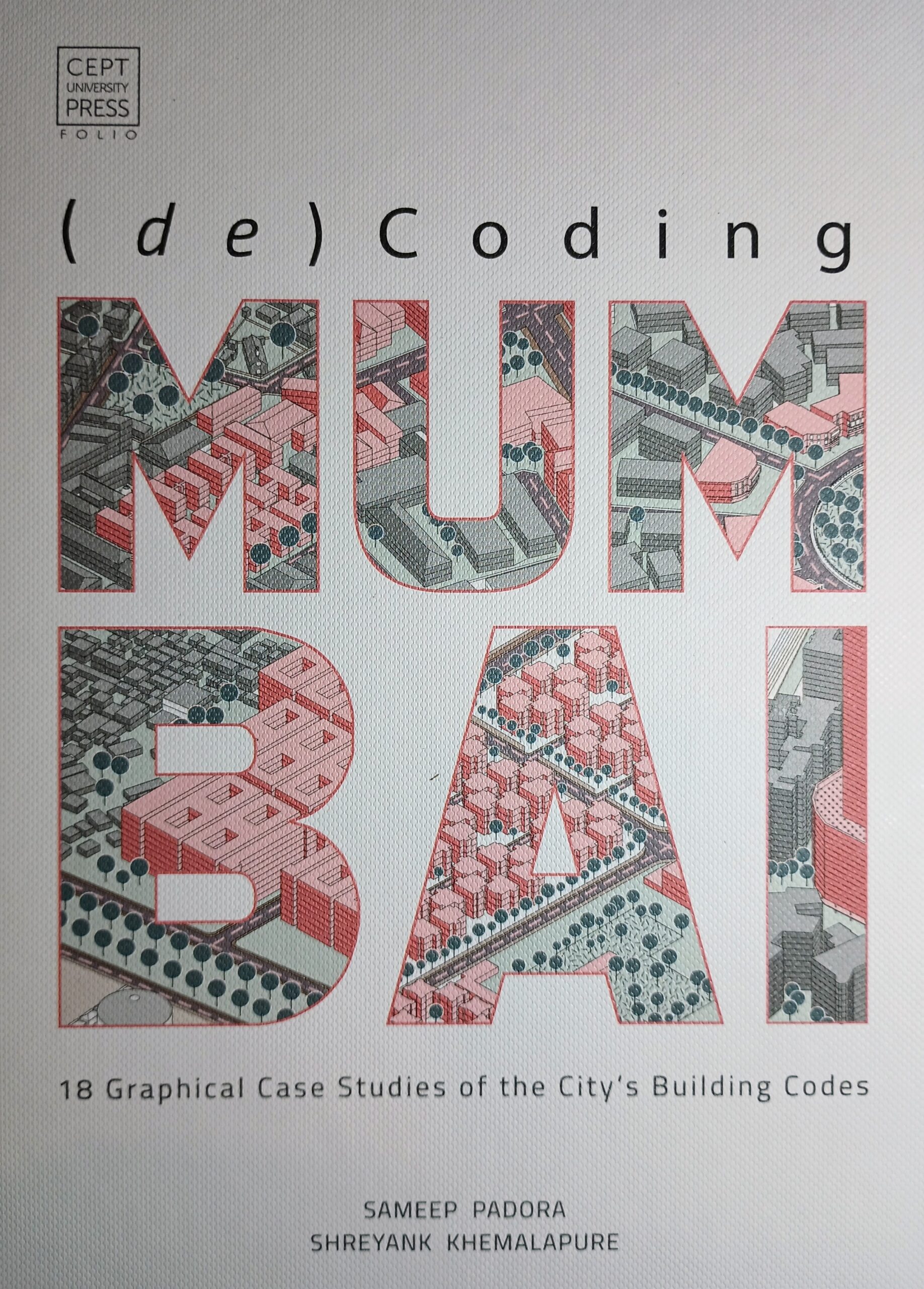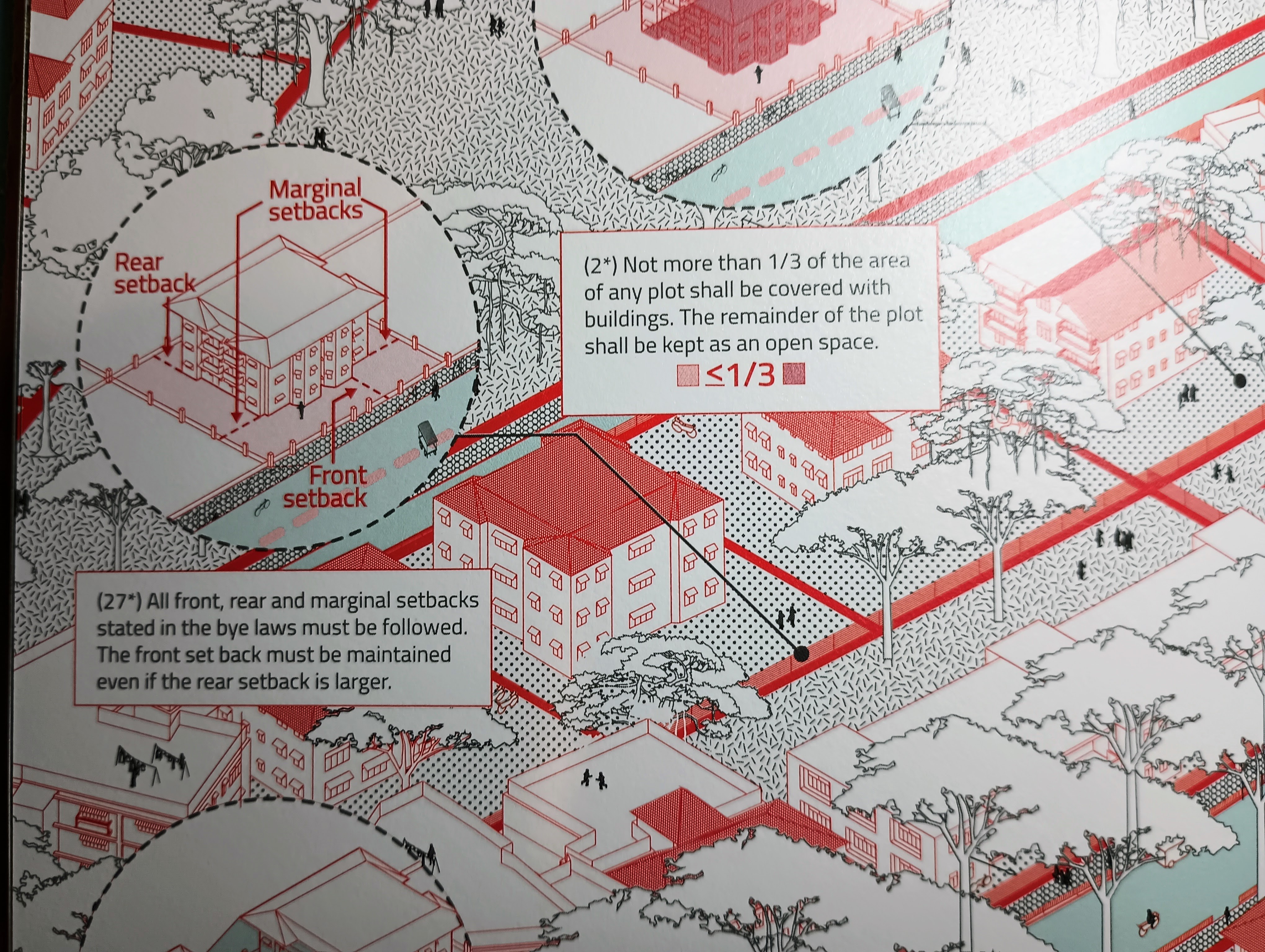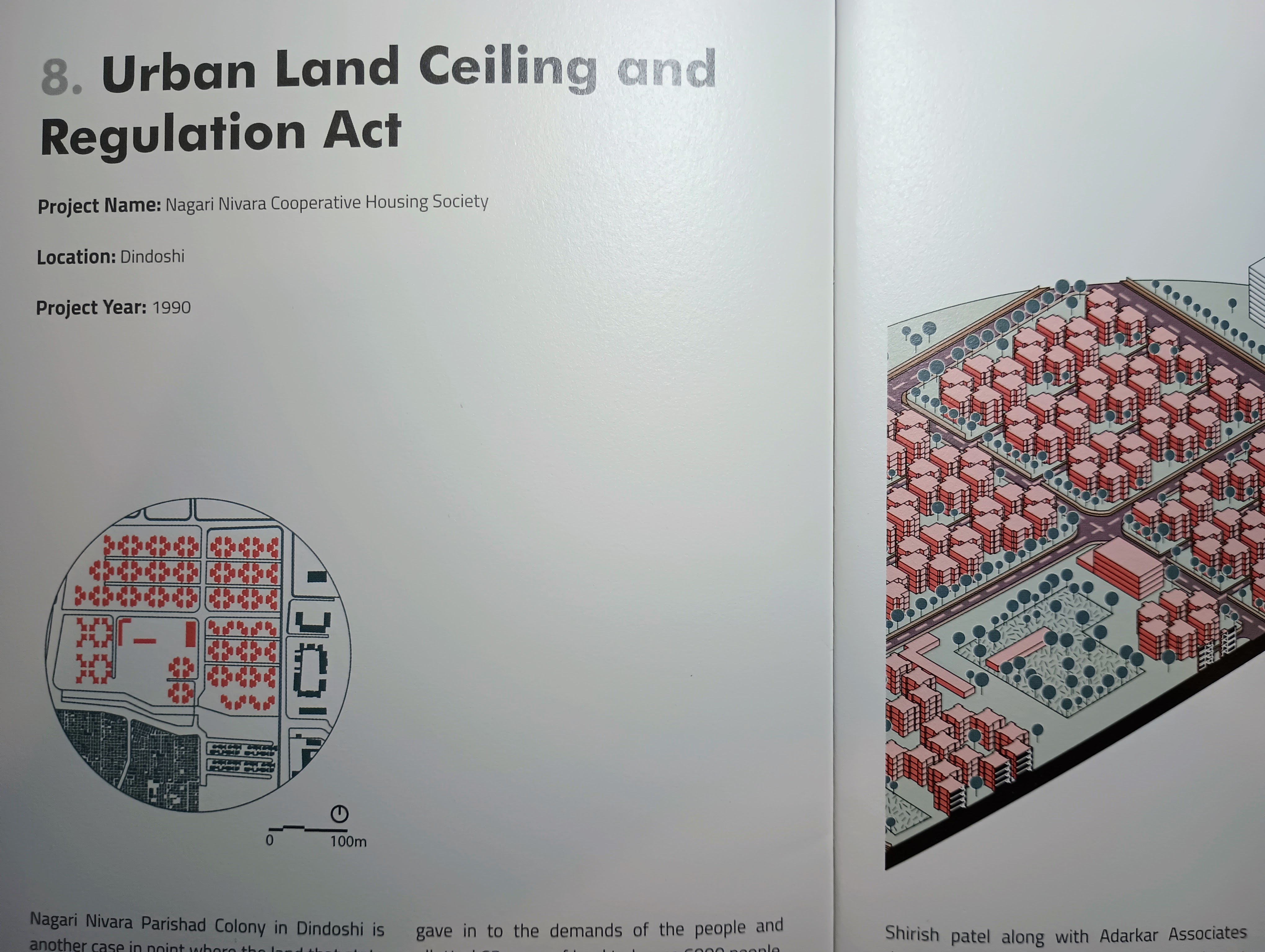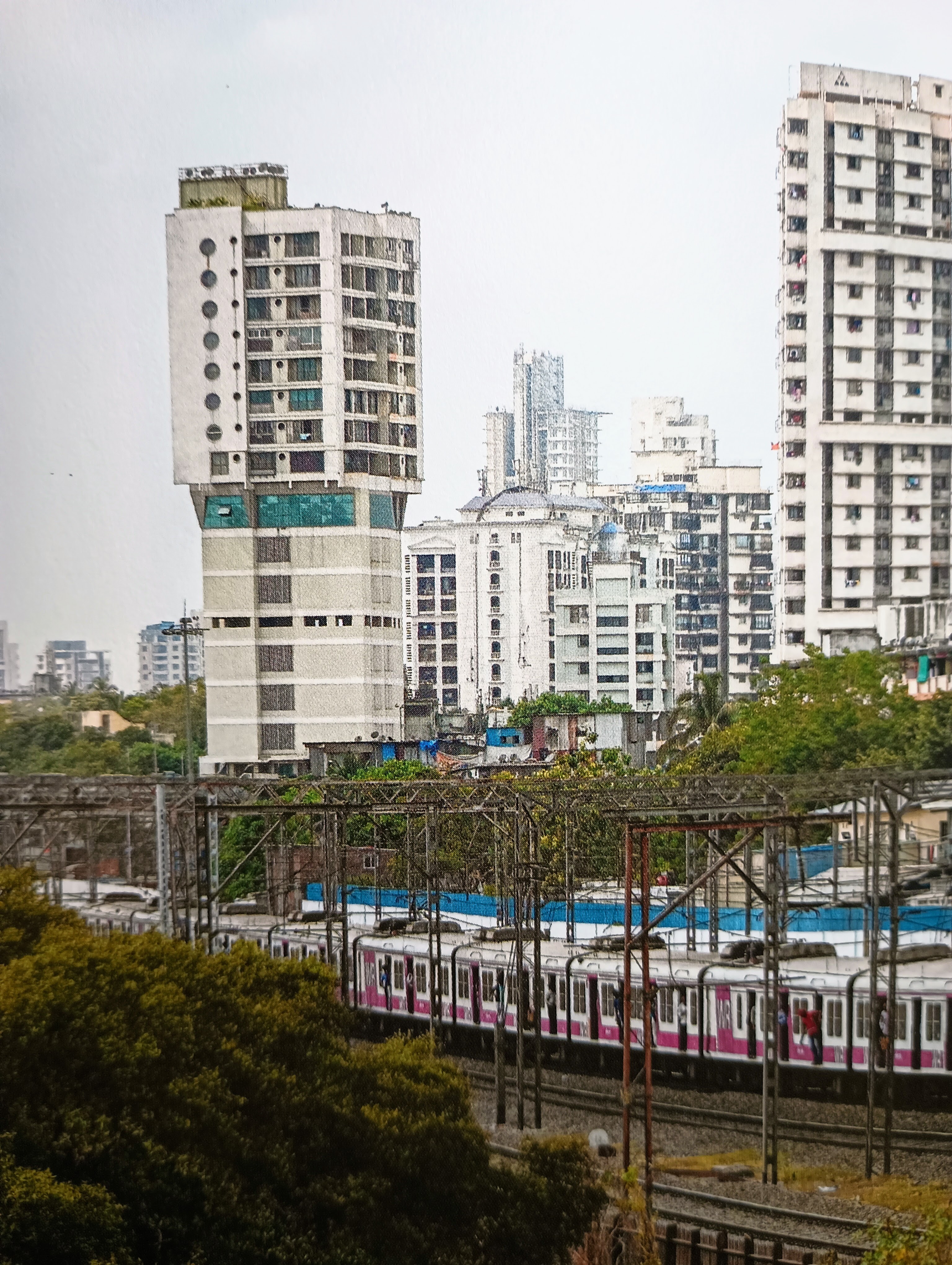Physical Address
304 North Cardinal St.
Dorchester Center, MA 02124
Physical Address
304 North Cardinal St.
Dorchester Center, MA 02124

On a recent visit to CEPT University, I received the generous gift of a few new books from CEPT University Press. One of these, (de)Coding Mumbai by Sameep Padora and Shreyank Khemalapure, is an attractive study of how Mumbai’s architecture is a product of its building and zoning codes. The application is to one city, but the lessons are universal. In particular, the authors show how incentive-laden zoning leads to architecture that undermines planners’ goals for the interface of private and public space.
[In] Mumbai, there is a specific type of architect who has become the interpreter of regulations and there are those architects who are aestheticians working on building skins. As much as there is convenience in this split, it has taken away a big part of the agency of the architects in the city…
One of the ways to change this situation is to start looking at architecture also as urban design exercise. Through the discipline of Urban Design…there is great potential to initiate dialogues and processes for neighbourhood-scale changes in the city.
(de)Coding Mumbai, p. 272
Following Michel Foucault, the authors describe the origins of planning in British Bombay, triggered by the outbreak of the Bubonic Plague, which spread from inland China through Hong Kong and to ports around the world.
The Indian subcontinent suffered an estimated 12 million deaths, most of them in Bombay Province… According to some accounts, close to 2,000 people died every week in the city for over a year and more than 8,50,000 inhabitants fled the city… It is under these dire conditions that the provincial state established the Bombay Improvement Trust in 1898.
(de)Coding Mumbai, p. 23
The Trust widened roads to bring in clean sea air (although Pasteur had established the germ theory of disease, old ideas lingered). It demolished slums, replacing them with multistory, modern housing blocks. And it used land readjustment (called Town Planning Schemes in India) to expand the city.

What Padora and Khemalapure add to this well-established history is how the granular text of the new regulatory documents dictated the form of now-historic neighborhoods.
The authors skip ahead to the post-Independence era, which they call “urban sprawl.” For American usage, that’s the wrong phrase – the era was characterized by a legalistic approach to planning and the coexistence of both hostility to new migrants and a concern with equity and redistribution. The principle underlying those contradictory impulses was an overweening respect for planners and planning. Planners “knew” that cities should be moderately-sized just as they “knew” the necessities of life for the very poor.

To achieve both ends, planners discouraged high-rise growth in central Mumbai, with catastrophic consequences: incredibly high formal housing costs and about half the population living in unregulated slums.
One project the books covers is the World Bank’s “sites and services” neighborhood in Charkop, which Alain Bertaud helped design.

Since India’s turn toward market ideas in 1991, Mumbai regulations have begun to relax. But the relaxation is far from laissez-faire. Instead, the regulatory regime creates a high market value for floor space, which it then monetizes directly and indirectly.
By selling FSI, Mumbai’s regulators incentivize rehabilitation, slum replacement, preservation via transferable development rights (TDRs), private open space, and other priorities. The obvious tradeoff is that development is more expensive than it would be under a regime without FSI. But
Padora and Khemalapure are more interested in drawing our attention to another tradeoff: regulators lose their leverage to regulate the interface between private and public space. Of one project, they write:
The project is a clear example of how suburban areas have been utilized as pools to balance TDRs… The bye-laws and design of such projects however, make no attempt to rethink the high-speed interface between the buildings, between the neighboring plots and the adjacent highway.
(de)Coding Mumbai, p. 226

The high value also distorts construction toward uses that do not count against the Floor Space Index (FSI), such as structured parking. In summary, the authors condemn this Byzantine system:
Since 1991, FSI has become a form of currency that is used instead of monetary compensation by the State in Mumbai.
(de)Coding Mumbai, p. 249
The authors spend just a few pages looking to the future – the first quote in this review is from that section. Theirs is more glimpse of the future than a vision. Clearly, they wish architects were doing something richer than regulatory interpretation and exterior decoration. The first step in that direction is to illuminate the current dispensation, and the authors have done so admirably.